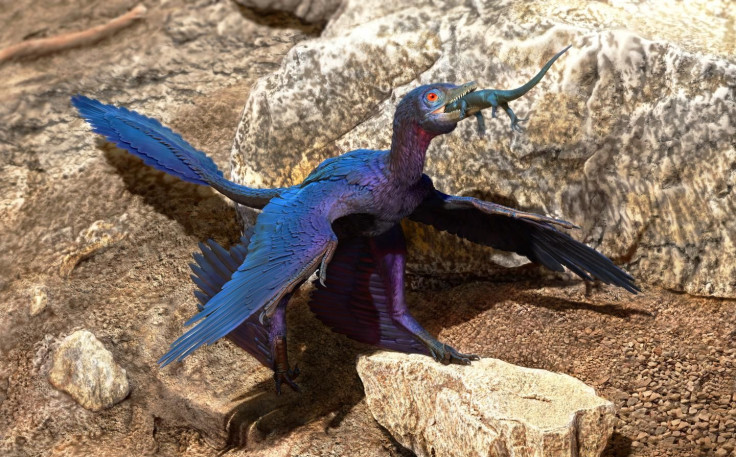Winged Dinosaur Fossil Hides A Surprise: An Unknown Ancient Lizard Species

Researchers who have unearthed a fossil of a crow-sized winged dinosaur that lived in the Early Cretaceous period China made another interesting discovery. They also found a new species of lizard inside the stomach of the 120-million-year-old dinosaur.
The Microraptor zhaoianus specimen, which was described in the journal Current Biology on July 11, likely feasted on the lizard before it died. Its fossils were unearthed from the 130-million-year-old Jehol biota in northeastern China.
Microraptors, whose name means "tiny plunderer” were among the smallest dinosaurs that lived. These dinosaurs have wings and are believed capable of flying.
Researchers at the Chinese Academy of Sciences who were studying the dinosaur’s fossil found the nearly complete lizard on the creature’s stomach. It appears the dinosaur swallowed the lizard whole, head first.
Further analysis revealed the lizard was unlike any other lizard known from the Cretaceous period. The lizards from the Cretaceous period are closely related to each other, but researchers observed that this lizard’s teeth are completely different from those found in the area.
Researchers named the lizard Indrasaurus wangi after the mythological deity Indra, who was swallowed by the dragon Vritra during a battle, and Chinese paleontologist Wang Yuan.
The find is the fourth Microraptor fossil with preserved stomach contents, but it is the first time that shows microraptors also ate lizards. These creatures preyed on mammals, birds, and fish as evidenced by previously studied fossils.
The specimen also showed that like some modern predatory birds, microraptors swallow lizards whole and head-first.
“Comparison of ingested remains preserved across Paraves suggests that dromaeosaurids retained the plesiomorphic condition in which ingested prey were fully digested, rather than egested, as has been demonstrated was the case in the probable troodontid Anchiornis,” the researchers wrote in their study.
Over the past two decades, researchers were able to identify predator and prey relationships based on stomach contents.
The fossil of the microraptor and its last meal are now helping scientists get a better understanding of the ancient Jehol food web, particularly what ate what in the prehistoric world.
“Although certainly preliminary, this food web indicates that fish formed the most important food source for secondary and tertiary consumers," the researchers said. "This food web can be used in the future to better understand the Jehol ecosystem."
© Copyright IBTimes 2025. All rights reserved.





















